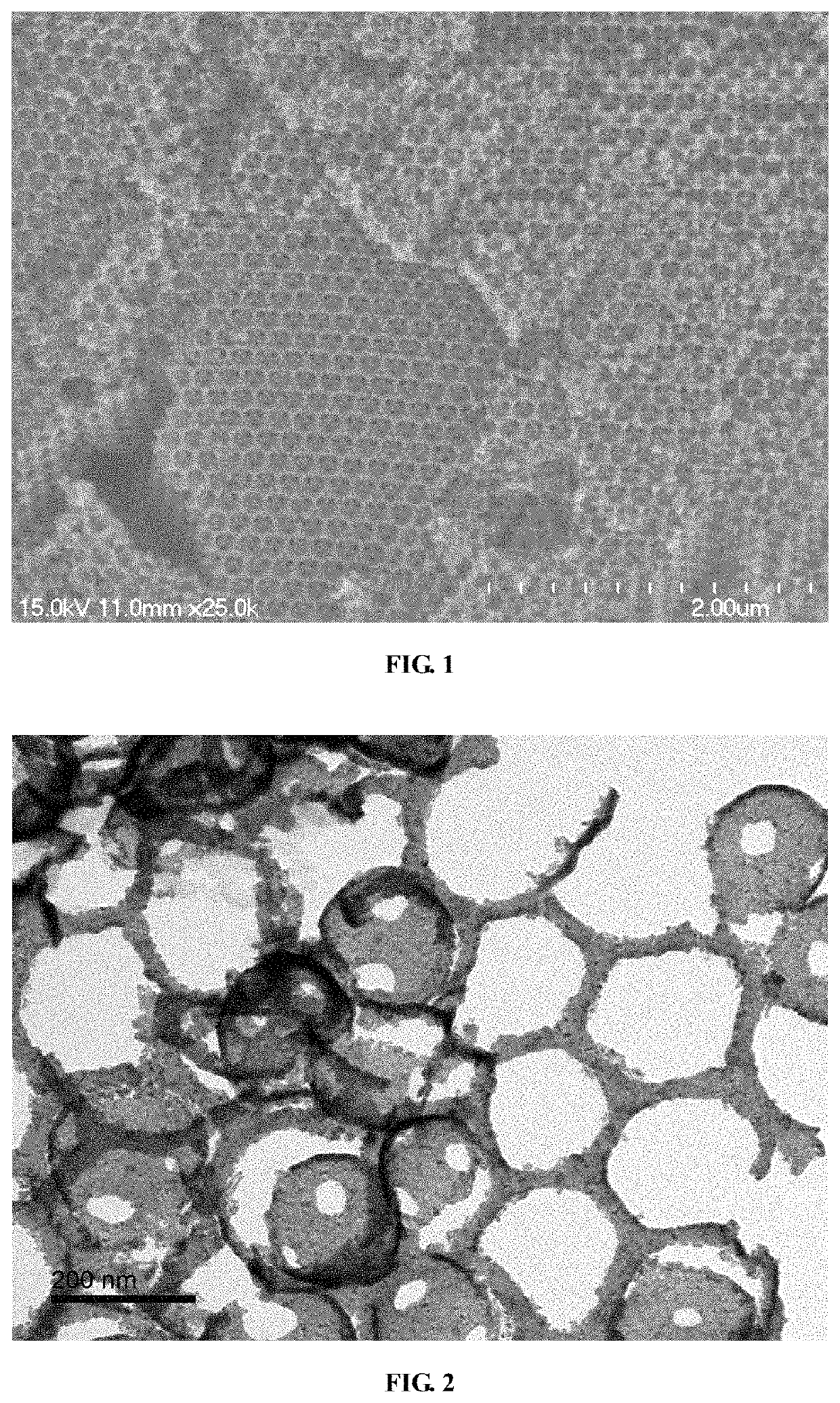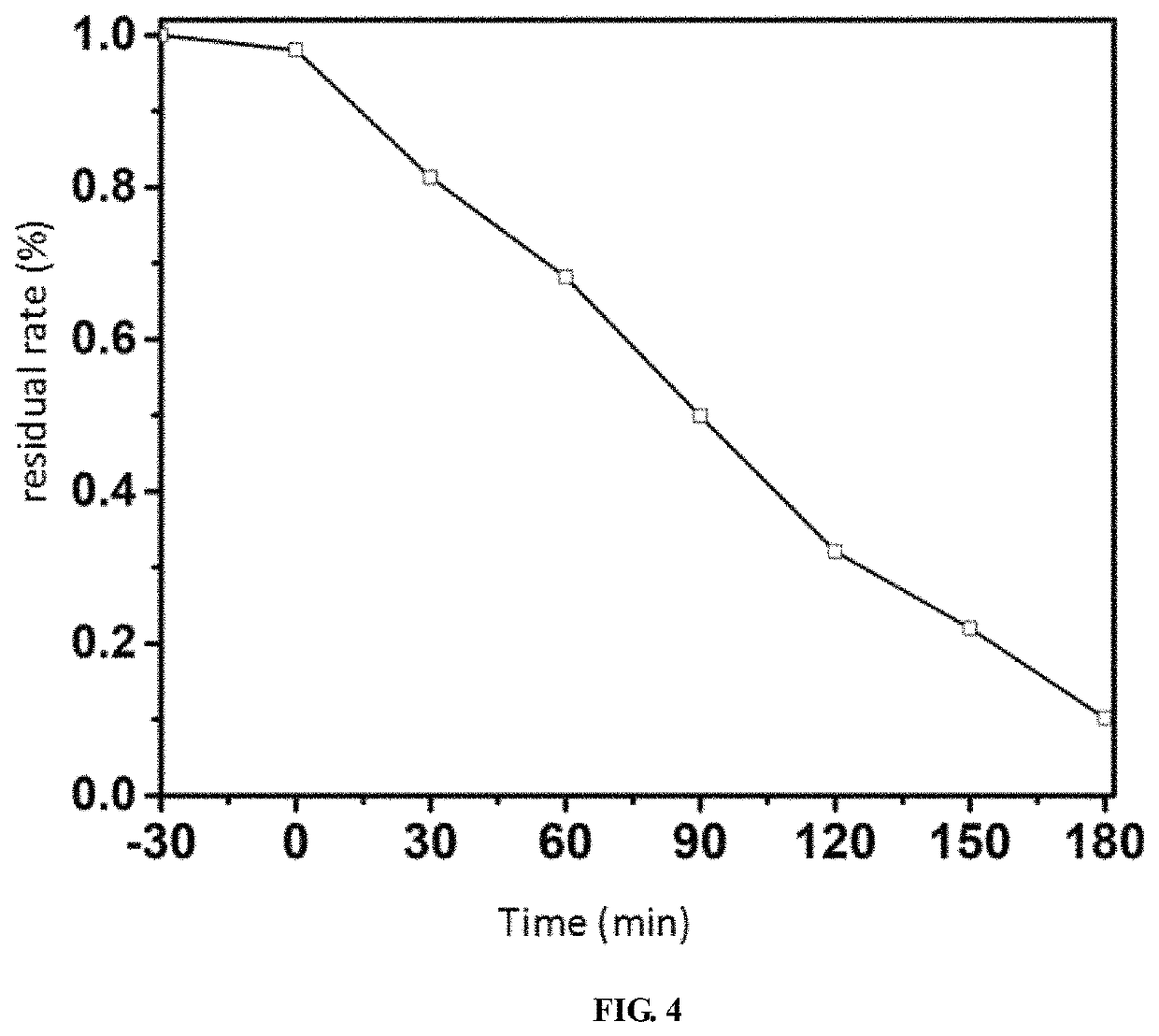Three-dimensional composite material, preparation method thereof and application thereof in removal of water pollutants by visible light catalytic degrading
a composite material and visible light technology, applied in the field of inorganic composite materials, can solve the problems of difficult biodegradation, high cost, and high cost, and achieve the effect of improving photocatalytic activity, high photoelectron electron hole recombination rate, and effective photocatalytic activity
- Summary
- Abstract
- Description
- Claims
- Application Information
AI Technical Summary
Benefits of technology
Problems solved by technology
Method used
Image
Examples
Embodiment Construction
[0044]The invention will be made a further explanation according to the following figures and the specific implementations.
[0045]Implementation 1:
[0046]Synthesis of Monodispersed Polystyrene Spheres.
[0047]100 mL deionized water, 12.18 g styrene and 0.5 g polyvinylpyrrolidone (K30) were added to 250 mL flask, and stirred for 30 min at room temperature. 0.3 g potassium persulfate was dissolved in 20 mL deionized water, and the above solution is added to the flask. Nitrogen was pumped for 1 h and then the system was reacted at 70° C. for 24 h. After the reaction was finished, the bulk was filtered. The filtrate was washed with deionized water by centrifuging and then freeze drying to obtain solids.
[0048]Implementation 2:
[0049]Synthesis of Polystyrene Opal Templates.
[0050]Polystyrene powder was dispersed in deionized water with concentration of 0.125 wt %. 1 mL polystyrene dispersing solution and 1 mL deionized water were added in weighing bottle. The clean FTO glass was inserted into t...
PUM
| Property | Measurement | Unit |
|---|---|---|
| particle diameter | aaaaa | aaaaa |
| volume fraction | aaaaa | aaaaa |
| temperature | aaaaa | aaaaa |
Abstract
Description
Claims
Application Information
 Login to View More
Login to View More - R&D
- Intellectual Property
- Life Sciences
- Materials
- Tech Scout
- Unparalleled Data Quality
- Higher Quality Content
- 60% Fewer Hallucinations
Browse by: Latest US Patents, China's latest patents, Technical Efficacy Thesaurus, Application Domain, Technology Topic, Popular Technical Reports.
© 2025 PatSnap. All rights reserved.Legal|Privacy policy|Modern Slavery Act Transparency Statement|Sitemap|About US| Contact US: help@patsnap.com



